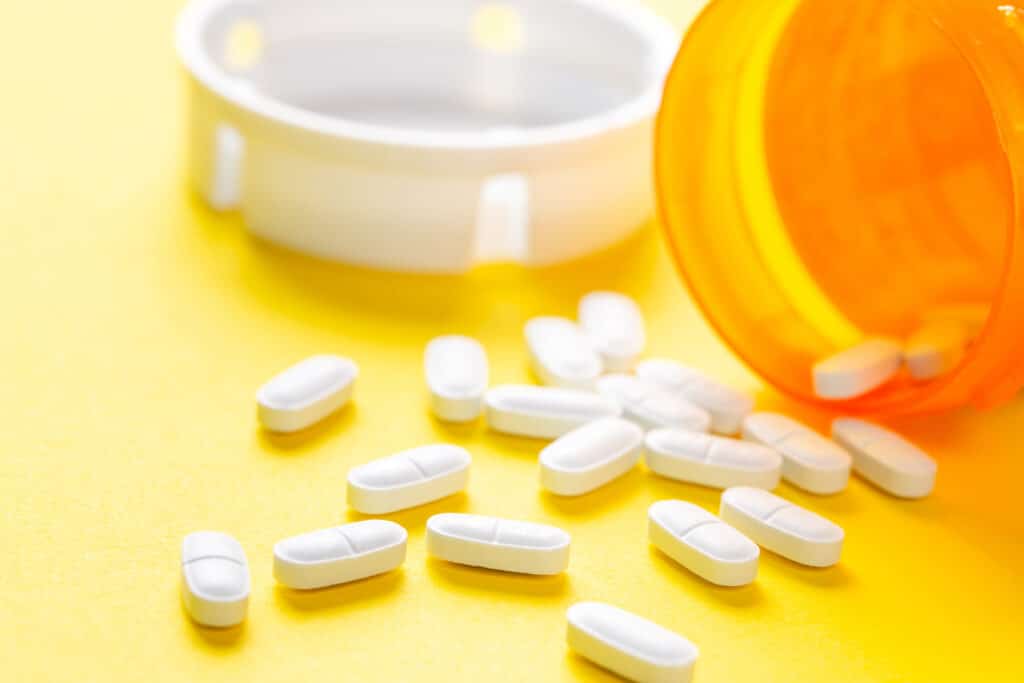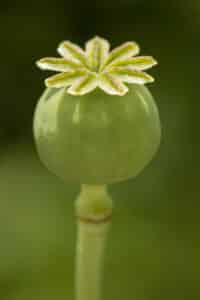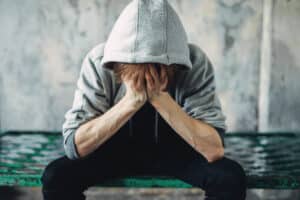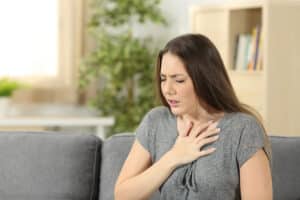
What is Wellbutrin?
Wellbutrin (bupropion) is an antidepressant that has helps combat depression. It can also help people quit smoking. Like all antidepressants, Wellbutrin has a lot of potential benefits, but it does not work for everyone.
If you use Wellbutrin for a period of time and decide you want to stop, you may experience Wellbutrin withdrawal. There are some factors you may want to consider before doing so.
What are Antidepressants?
In the United States, antidepressants are among the most widely prescribed drugs. Some people use them for a couple of weeks or months, and others use them for years. Approximately one out of every four adults has been prescribed an antidepressant in their lifetime, and some use them for over 10 years or more. Many people take antidepressants permanently when they discover one that works for them. This is especially true if the antidepressant has few to no side effects.
Antidepressants are a unique drug class in that not every drug works for everybody. It may require many attempts for certain people to find a drug that works. You may even decide to avoid taking Wellbutrin because you’re feeling stable and happy to go without it. Other reasons for quitting include success in quitting smoking.
Wellbutrin Withdrawal Symptoms
When people stop taking Wellbutrin, they rarely develop side effects. The severity of the symptoms varies from mild to severe in those who do. Your symptoms could be more potent if you stop Wellbutrin and a more popular class of antidepressants known as selective serotonin reuptake inhibitors, or SSRIs.
Wellbutrin is often used as part of an “antidepressant cocktail” by many individuals. It has been shown in studies to enhance the effects of other antidepressants, which is why it is often prescribed in combination with SSRIs.
Certain neurotransmitters in the brain are affected by antidepressants, which function as chemical messengers in the body. They aid nerve cell communication and are involved in all of the body’s complex processes, such as feeding and sleeping. They affect your feelings and moods, as well.
Wellbutrin Effect on Serotonin
The majority of modern antidepressants work by affecting a neurotransmitter known as serotonin, which helps to keep a person’s mood in check. While the causes of depression are unclear, low serotonin levels are thought to play a role.
SSRIs, such as Prozac and Lexapro, boost serotonin levels. It can be a total shock to the system if you miss taking these medications suddenly. It is normal to feel withdrawal symptoms as the body responds to lower serotonin levels.
Since serotonin is used in so many different body processes, withdrawal symptoms can become very disparate. If you are discontinuing an SSRI, you may experience the following:
- Sweating: Feeling flushed, sweating excessively
- Digestive issues: Nausea, vomiting, diarrhea, or a lack of appetite due to serotonin’s role in the digestive system
- Sleeping problems: Trouble falling asleep or staying asleep; strange visions or nightmares
- Neurological side effects: Tremors, restless muscles, numbness, difficulty walking
- Psychological signs: Mood swings, agitation, fear, mania or depression
- Brain zaps: Unusual occurrence that sounds like a jolt to the head, also known as a shiver or brain shake
Since it affects the neurotransmitters dopamine and noradrenaline, Wellbutrin differs from most antidepressants. You are unlikely to develop any of the serotonin-related symptoms mentioned above unless you are already withdrawing from an SSRI.
There are few reports of true Wellbutrin withdrawal, but the most common complaint is irritability. Withdrawal may involve uncharacteristically offensive, disrespectful or threatening actions, as well as a state of intense agitation.
If you use Wellbutrin to quit smoking, it’s likely that after you stop taking it, your nicotine cravings will return. Fortunately, these cravings are mild in comparison to previous experiences.
Coping and Relief
If you have a psychiatric condition such as dissociative symptoms, it’s crucial to contact your psychiatrist or nurse whenever your prescriptions change. Seeing a doctor will help you deal with issues like mood swings, agitation and hopelessness.
If you’re using Wellbutrin to help you stop smoking, make sure to have a nicotine patch or gum on hand. This will help alleviate any nicotine cravings you might have and any agitation that comes with them.
Wellbutrin Withdrawal Warnings
While Wellbutrin doesn’t usually have withdrawal symptoms, it does come with a severe FDA alert about its link to suicidal ideation in kids, teenagers and young adults, as do all antidepressants. When changing your dosage, you should take extra care.
Suicidal thoughts and emotions are most frequent in children and young adults under the age of 24, but they can hit anyone. If you are having any of the following Wellbutrin withdrawal symptoms, seek immediate medical attention:
- Suicidal or self-destructive thoughts
- Thoughts about how you can commit suicide
- Unusual excitement or severe restlessness
- Actions without considering the consequences
- Extreme agitation or concern
- Anxiety disorders
Suicidal thoughts and actions are uncommon, although they do occur in some individuals. Before you quit taking Wellbutrin, talk to the doctor about the risks and benefits. If you wish to avoid taking your medication, a quick taper might be a better option than quitting cold turkey.
Granite Recovery Centers
Certified doctors deliver evidence-based clinical psychotherapies at Granite Recovery Centers, which are tightly woven into a comprehensive 12-step curriculum led by qualified facilitators.
Our trained clinicians use evidence-based interventions to assist in battling addiction issues and help our patients process complex and stressful issues relating to their drug use. When taken in combination with our formal 12-step method, psychological therapies can help patients recover.
Intensive Outpatient Drug Rehab Program (IOP)
Outpatient rehabilitation is often the final stage of treatment, and these programs include full societal reintegration. Clients who live in one of our sober living homes and attend IOP can also receive intensive rehabilitation treatment as part of our comprehensive care services. Outpatient clinics have varying levels of treatment and programming. IOP clients also attend medical, holistic, and 12-step classes for at least 10 hours a week.
Detox and Withdrawal
Some drug and alcohol treatment facilities have onsite detox services where you can be carefully monitored when suffering from withdrawal. Granite Recovery Centers provides medical detoxification for people who do not need immediate medical intervention, are not a danger to themselves, and are capable of self-evacuation in the event of an emergency. Talk with the rehab staff before beginning inpatient drug rehab to see if medical detox is the right place for you.
Holistic Therapies
Holistic treatments help unify the mind, body and soul. Body-centric approaches such as yoga, meditation and fitness are examples of mind-calming, body improvement and mental pivoting techniques. Our progressive approaches complement our 12-step drug and alcohol care model, aiding patients in overcoming physical and mental imbalances and recovering through mindfulness and self-acceptance.
Sober Living
Our four sober living homes are tranquil environments that offer a safe, loving, structured, and clean environment to clients in early recovery. In the rehab spectrum, sober living customarily supplements extended therapy, although certain people may choose to skip primary inpatient treatment and go directly to sober living. Sober living serves as a temporary buffer for clients who are starting school or a new job and navigating the “real world.” In sober homes that seek to provide independence, clients can better fulfill their obligations, learn life skills and sober values.
Long-Term Treatment
Slowly tapering off antidepressant dosage is the best way to stop taking them. Tapering schedules for Wellbutrin usually are very short. It is best to make a plan with your doctor to reduce the dosage throughout one to two weeks gradually.
Following your Wellbutrin taper, any long-term therapy will focus on the disease that caused you to start taking Wellbutrin in the first place. If you have depression, your doctor might recommend switching to an SSRI you have not tried before or other alternatives. It may take a few tries to find the proper treatment or medication blend.
Keep in mind that there isn’t a single pill that can “cure” you. Depression is a complex illness that needs a multifaceted recovery strategy. On its own, medicine can only do so much. Psychotherapy may be an integral part of depression treatment. Science attests that a mixture of psychotherapy and medicine is more effective for depression and anxiety than drug treatment alone.
Psychotherapy, also known as talk therapy, is a long-term method to learn more about yourself. You’ll look at why you do things the way you do and feel the way you do. You will learn how to move toward the life you deserve with a therapist’s help by reforming the dysfunctional habits that hold you down.
A Word from Granite Recovery Centers
Depression is a complex illness to overcome. It can feel like your addiction traps you in a long, dark tunnel with no way out, but don’t let the feeling get the best of you. Keep going, and don’t give in when you run into walls or fall. Experienced mental health professionals and addiction specialists at Granite Recovery Centers can help you find way to a happier and healthier life.


 In the United States alone,
In the United States alone, 




 Withdrawing from a drug can be a scary experience. The professionals at Granite Recovery Centers can help with Xanax withdrawal
Withdrawing from a drug can be a scary experience. The professionals at Granite Recovery Centers can help with Xanax withdrawal 






